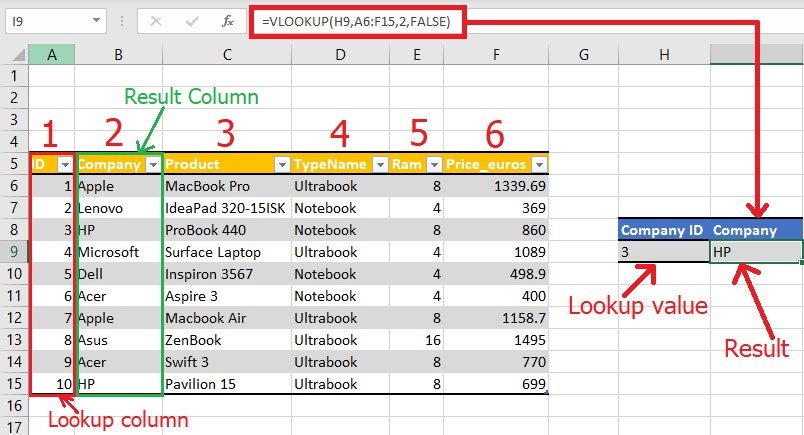5 Ways to VLOOKUP Across Excel Sheets Easily

Excel's VLOOKUP function is a staple for anyone who deals with data manipulation in spreadsheets. However, when dealing with data spread across multiple sheets, performing a VLOOKUP can seem daunting. In this extensive guide, we will explore five effective methods to execute a VLOOKUP across different sheets in Excel, ensuring your data analysis tasks become more efficient and less time-consuming.
Understanding VLOOKUP

Before diving into cross-sheet VLOOKUPs, let’s briefly review what VLOOKUP does:
- It stands for Vertical Lookup.
- This function searches for a value in the leftmost column of a table and returns a value from the same row in a specified column.
- The basic syntax is:
VLOOKUP(lookup_value, table_array, col_index_num, [range_lookup]).
Method 1: Direct Reference

The simplest way to perform a VLOOKUP across sheets involves referencing the data range directly. Here’s how:
- Identify the cell where you want the result to appear.
- Type the VLOOKUP formula in this cell.
- For table_array, you will reference another sheet directly, like so:
‘Sheet2’!A1:D50. - Complete the formula with the necessary arguments.
💡 Note: Ensure the range you're referencing is valid. Any changes in data layout or movement of sheets can disrupt this method.
Method 2: Named Ranges

Named ranges can make formulas more readable and easier to manage:
- Go to the Formulas tab and choose “Define Name”.
- Name your range, for example, ‘EmployeeData’ for a range from Sheet2.
- Use this name in your VLOOKUP, like this:
VLOOKUP(A2,EmployeeData,3,FALSE).
Here's an example of how to define a named range:
| Name | Range |
|---|---|
| EmployeeData | 'Sheet2'!A1:D50 |

📌 Note: If you rename or move sheets, remember to update or redefine the named ranges.
Method 3: Indirect Function

The INDIRECT function can dynamically reference other sheets:
- Use INDIRECT to construct the table_array reference dynamically.
- Example formula:
VLOOKUP(A2,INDIRECT(“‘” & B1 & “’!A1:D50”),3,FALSE). - Here, B1 would contain the name of the sheet you want to VLOOKUP from.
🛈 Note: The INDIRECT function can be volatile, meaning it recalculates every time anything changes in the workbook, potentially slowing down Excel.
Method 4: Using Tables

Excel Tables provide a structured way to reference data:
- Convert your data range into a Table by selecting it and using Ctrl + T.
- Name your table.
- Use the table name in VLOOKUP like:
VLOOKUP(A2,OtherSheetTable,3,FALSE).
Here's an example:
- Create a table on Sheet2 and name it OtherSheetTable.
- In Sheet1, use
VLOOKUPas shown above.
🗳️ Note: Tables maintain their references even if you add or remove rows, making them excellent for dynamic data sets.
Method 5: Power Query

For complex data manipulation, Power Query offers a robust solution:
- Open the Power Query Editor from the Data tab.
- Import data from different sheets or sources.
- Use the Merge function in Power Query to simulate VLOOKUP across sheets.
Here's how you might set up a Merge:
- Import data from both sheets into Power Query.
- Use
Merge Queriesto join based on a common key. - Expand the columns to include the merged data in your query results.
🔌 Note: Power Query allows you to refresh data automatically from multiple sources, making it ideal for ongoing data analysis tasks.
Wrapping Up

We’ve explored five diverse methods for performing VLOOKUP across Excel sheets. Each approach has its advantages:
- Direct Reference is straightforward but lacks flexibility.
- Named Ranges make formulas clearer and more manageable.
- INDIRECT provides dynamic reference capabilities at the cost of some performance.
- Excel Tables offer structured references with built-in functionality for data expansion.
- Power Query is the powerhouse for merging and querying data from multiple sources efficiently.
Choosing the right method depends on your data setup, update frequency, and overall complexity of your workbook. Experiment with these methods to find what suits your specific needs best. With these techniques in your Excel toolkit, you can streamline your data analysis, enhancing both productivity and accuracy in your work.
Can VLOOKUP look up data from multiple sheets?

+
Yes, VLOOKUP can indeed retrieve data from multiple sheets using various methods like direct reference, named ranges, or Power Query, as described in the post.
Is there any performance impact when using INDIRECT for VLOOKUP?

+
Yes, INDIRECT is a volatile function which recalculates whenever anything in the workbook changes, potentially slowing down Excel performance. This impact is more noticeable in larger datasets.
How can I make my VLOOKUP formula more dynamic?

+
Using named ranges or the INDIRECT function can dynamically reference different sheets or ranges within your VLOOKUP formula, making your data lookups more flexible.
What’s the advantage of using Excel Tables for VLOOKUP?

+
Excel Tables automatically adjust the range of data as rows are added or removed, maintaining the integrity of your VLOOKUP formula without manual adjustments.
What should I do if my VLOOKUP across sheets isn’t working?

+
Ensure that sheet names and range references are accurate, and check if the lookup column is in the leftmost position in the table array. Also, verify if the data types of the lookup value match the data in the lookup column.



